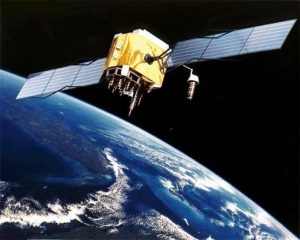Iran is thought to be interested in acquiring China�s Chengdu J10B 3rd generation fighter jets, as well as Chinese unmanned aerial vehicles (UAVs), ant-ship cruise missiles, submarines, and perhaps also a license for Iran to manufacture the Chinese MBT 2000 or even the MBT 3000 tank.
Often not mentioned in discussions about Sino-Iranian military and intelligence cooperation, however, are the actual and potential areas of collaboration in national security space.
For example, it is already known that Iranian defence electronics company Salran signed an agreement in October 2015 with Chinese defence and aerospace companies to start using BeiDou satellite positioning, navigation, and timing (PNT) equipment on Iranian missiles, UAV�s, and other military capabilities that in turn will improve their accuracy, effectiveness, and lethality. Analysts in the Middle East and the West are aware of significant modernisation efforts underway in Iran on a range of its weapon systems, and there are growing signs that Tehran is looking at shifting away from its purely defensive military doctrine to one that will increasingly use offensive systems for the purpose of coercion.
 Chinas GNSS Beidou satellites; Credits: China.org.cnOther areas of close military and intelligence cooperation may come in the form of communication and high-resolution earth observation satellites. Iran is currently looking to acquire both a National Remote Sensing Satellite (NRSS) and a National Communications Satellite (NCS). While it is thought that Iran is intent on building its own NRSS, it is looking to have a foreign manufacturer produce its NCS, and it is understood that at least one Chinese satellite manufacturer is interested in bidding for that project. Even with the NRSS, a burgeoning Sino-Chinese defence and intelligence relationship could result in China providing key expertise and technologies to help Iran build such a satellite.
Chinas GNSS Beidou satellites; Credits: China.org.cnOther areas of close military and intelligence cooperation may come in the form of communication and high-resolution earth observation satellites. Iran is currently looking to acquire both a National Remote Sensing Satellite (NRSS) and a National Communications Satellite (NCS). While it is thought that Iran is intent on building its own NRSS, it is looking to have a foreign manufacturer produce its NCS, and it is understood that at least one Chinese satellite manufacturer is interested in bidding for that project. Even with the NRSS, a burgeoning Sino-Chinese defence and intelligence relationship could result in China providing key expertise and technologies to help Iran build such a satellite.While technology transfers and expertise is obviously a main feature in any defence and intelligence relationship, other factors can be just as important to Beijing and Tehran, as well as third countries. An intelligence relationship, for example, implies intelligence data exchanges, that might also include the provision of high-resolution satellite imagery from China to Iran. Further, the two countries might also exchange data, methods, and other information on counterspace techniques and procedures and other sensitive issues.
If this were to occur (and assuming it is not already happening), the implications for wider Middle East security could be profound if it is revealed that Tehran not only has access to highly precise PNT data, but also targeting intelligence, provided by China.
Such developments should also be viewed as part of a wider change in policy on Middle East issues by China. Since a disproportionate amount of China�s oil needs are sourced from an unstable Middle East, Beijing is slowly moving away from its meticulously neutral stance on Middle Eastern geopolitical events. Several weeks ago, a senior Chinese People�s Liberation Army Navy (PLAN) officer visited Damascus with a view to provide medical support to pro-Assad forces, signaling that Beijing is actually taking sides.
The burgeoning security relationship with Iran may well be another indication that China�s future engagement in the Middle East may not be business as usual.
Original published at: http://spacewatchme.com/2016/11/irans-growing-dependency-on-chinas-beidou-satellite-navigation/










